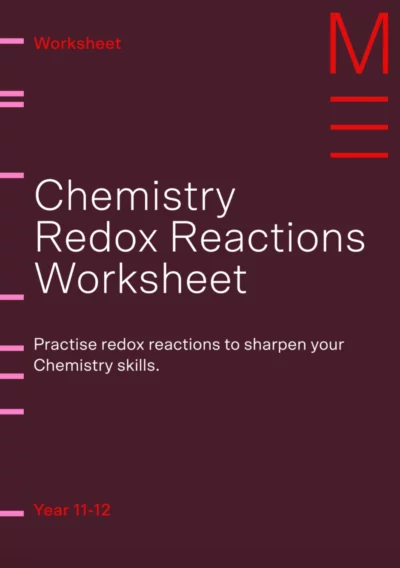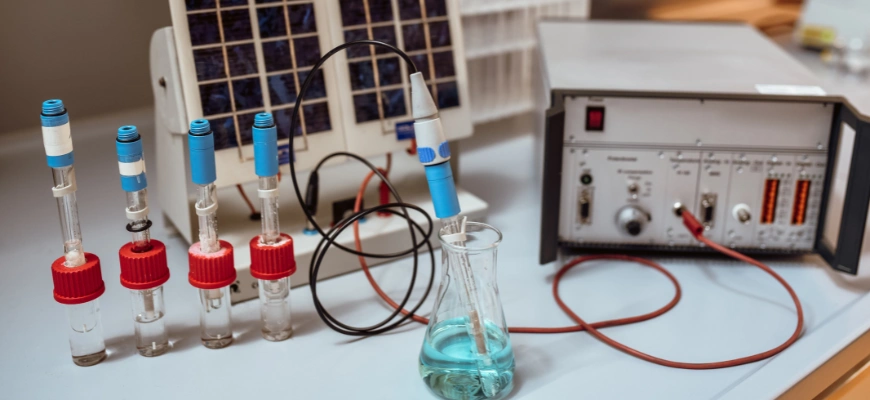Welcome to Matrix Education
To ensure we are showing you the most relevant content, please select your location below.
Select a year to see courses
Learn online or on-campus during the term or school holidays
Learn online or on-campus during the term or school holidays
Learn online or on-campus during the term or school holidays
Learn online or on-campus during the term or school holidays
Learn online or on-campus during the term or school holidays
Learn online or on-campus during the term or school holidays
Learn online or on-campus during the term or school holidays
Learn online or on-campus during the term or school holidays
Learn online or on-campus during the term or school holidays
Learn online or on-campus during the term or school holidays
Select a year to see available courses
Science guides to help you get ahead
Science guides to help you get ahead
Want to prepare for the VCE Chemistry exam effectively? These 20 practice questions will help you master key topics and improve your exam performance!

Join 75,893 students who already have a head start.
"*" indicates required fields
Related courses

Join 8000+ students each term who already have a head start on their school academic journey.
If you’re preparing for the VCE Chemistry exam, you know it’s no walk in the park. With so much content to cover, it’s tempting to just memorise definitions and formulas. But the real success in Chemistry comes from understanding. You have to know why a reaction is occurring and how to apply that knowledge to solve problems.
The VCE Chemistry exam blends theory with application, and the best way to master it is through practice!
So, we’ve put together 20 essential practice questions. If you’re aiming for top marks, you should be able to work through these confidently. If not? That’s a sign to revisit your revision and keep going until it all clicks.
Table of contents:
Chemistry students must grasp key concepts and use them to solve problems. It’s a unique blend of theory and application. Here are some tips to help you prepare:
1. Master the basics
Topics like atomic structure, bonding, and stoichiometry are the foundation for everything else. Every day, try practising the core formulas and balancing chemical equations until they’re second nature to you.
2. Prioritise understanding over memorisation
While formulas and definitions are important, the exam often tests how well you can apply them in different contexts.
Sure, you may know Le Chatelier’s principle, but do you know how it works to predict changes in equilibrium?
After reviewing a concept, see if you can explain it to someone in your own words.
3. Practise problem-solving
Practise regularly to improve your problem-solving skills. Use past VCE exam papers and complete questions without notes.
4. Mix up your questions
You need to move between theory and calculations smoothly. Focus on: Mole calculations, redox reactions, equilibrium questions, and spectroscopy problems.
To learn more about how to ace your exam, read our guide to the VCE Chemistry exam.
Sharpen your skills with challenging redox problems and step-by-step explanations! Fill out your details below to get this resource emailed to you. "*" indicates required fields
Download your free Chemistry Redox Reactions Practice Worksheet

Download your free Chemistry Redox Reactions Practice Worksheet
These are the areas where VCE Chemistry students often lose marks. Focusing your revision on these difficult topics and sub-topics here can give you a big advantage.
Chemical equilibrium
Analysis of organic compounds
Organic chemistry reactions
Redox reactions and electrochemistry
Thermochemistry and enthalpy
Here are 20 practice questions to help you cover key topics in your VCE Chemistry exam revision. There are 10 multiple-choice, 7 short-answer, and 3 extended-response questions. Scroll down for full solutions and explanations.
Get ahead with Band 6 Chemistry resources
Learn from expert teachers and access 100+ pages of exam-style questions and quizzes for every module.

1. Le Chatelier’s Principle and Temperature (4 marks)
Solution:
According to Le Chatelier’s principle, the equilibrium will shift to minimise a disturbance. Increasing pressure shifts the equilibrium toward the side with fewer gas molecules, so the reaction will shift to the right, favouring N₂O₄ formation (1 mole of gas instead of 2).
Increasing temperature will shift the equilibrium to the left, as the reverse reaction is endothermic. This favours NO₂ formation, absorbing the added heat.
The equilibrium constant (K) will decrease with increasing temperature because higher temperatures favour the reverse reaction, resulting in greater NO₂ formation.
Explanation:
The student correctly applies Le Chatelier’s principle to both pressure and temperature changes, explaining the shifts in equilibrium position and how temperature impacts the equilibrium constant.
Tip:
For equilibrium questions, always balance the equation first, then consider the number of gas molecules on each side and whether the reaction is exothermic or endothermic.
2. Structural Formula (4 marks)
The structural isomers of C₅H₁₂ are:
Branching lowers the boiling point because branched molecules have a smaller surface area and less efficient packing compared to straight-chain isomers, leading to weaker dispersion forces.
Explanation:
This response correctly lists all structural isomers and explains the impact of branching on boiling points, showing an understanding of both molecular structure and intermolecular forces.
Tip:
When asked to draw structural isomers, start by drawing the straight-chain version, then gradually add branching in different positions.
3. Solution Calorimetry. (4 marks)
Solution:
a) Heat released during the reaction (2 marks)
Assuming no heat loss, the quantity of heat released by the reaction is equal to the total quantity of heat absorbed by the solution. To calculate the heat absorbed by the solution, we use the formula: q=mcΔT
Where:
Substituting the values:
q(solution) = 100.0 g × 4.18 J/g°C × 6.2 °C = 2591.6 J = 2.5916 kJ
Thus, the heat released is 2.6 kJ (2 sig. fig.).
b) Enthalpy of neutralisation (ΔH) (2 marks)
First, determine the moles of HCl used:
moles of HCl total = concentration × volume = 1.6 M × 0.045 L = 0.072 mol
moles of NaOH total = concentration × volume = 1.0 M × 0.055 L = 0.055 mol
NaOH is the limiting reactant, so moles of HCl used = 0.055 mol
The enthalpy of neutralisation is calculated by dividing the heat released by the moles of HCl used:
Since the reaction is exothermic, the enthalpy of neutralisation is ΔH = −47 kJ/mol (2 sig. fig.).
Explanation:
This response clearly demonstrates the application of relevant formulas and concepts in a step-by-step manner. Each calculation is fully explained and the reasoning behind every step is clear.
Tip:
For calorimetry calculations, apply the formula q=mcΔT, and then ΔH = -q/n. Remember that for exothermic processes, enthalpy change will be a negative value.
4. Balance the Redox Reactions (2 marks)
Solution:
Explanation:
This response follows the correct steps for balancing redox reactions in a basic solution, systematically showing each step. The inclusion of OH⁻ in the final step demonstrates an understanding of reactions in basic conditions.
Tip:
Start by balancing atoms other than O and H, then balance oxygen with H₂O and hydrogen with H⁺ before accounting for basic conditions by adding OH⁻.
5. Galvanic Cell with Zinc and Copper (3 marks)
Solution:
Oxidation: Zn²⁺ + 2e⁻ → Zn (E° = -0.76 V)
Reduction: Cu²⁺ + 2e⁻ → Cu (E° = +0.34 V)
E°cell = E°cathode – E°anode
E°cell = 0.34 V – (-0.76 V)
E°cell = 1.10 V
Explanation:
This response is exemplary because it correctly provides the chemical equations for oxidation and reduction and applies the correct formula for calculating cell potential. It demonstrates a solid understanding of galvanic cell function, and correct calculation methods, all conveyed concisely.
5. Equilibrium Concentrations (3 marks)
a) Construct an ICE table to set out your working.
| Concentration | CO₂(g) | CO(g) | O₂(g) |
| Initial | 0.5 | 0 | 0 |
| Change | -0.24 | +0.24 | +0.12 |
| Equilibrium | 0.26 | 0.24 | 0.12 |
b) Substitute the equilibrium concentrations into the equilibrium expression to determine the equilibrium constant.
7. IR Spectrum: Absorption of Different Frequencies (3 marks)
(a)Identify the bonds that are present in molecule V based on the spectrum. (1 mark)
C–H and C=O
(b) Explain why different frequencies of infrared radiation can be absorbed by the same molecule as shown in the spectrum above.
(2 marks)
Different frequencies of IR radiation are absorbed by a molecule because various bonds vibrate at characteristic frequencies depending on their bond strength and atomic masses. For example, stretching vibrations of C=O bonds occur at a higher frequency (~1700 cm⁻¹) than O–H stretches, which occur between 3200-3600 cm⁻¹ due to different bond polarities and masses.
1. Green Chemistry and Atom Economy (10 marks)
Atom economy:
For the reaction:
C₇H₆O₃ + (CH₃CO)₂O → C₉H₈O₄ + CH₃COOH
Green Chemistry improvements:
2. Organic Synthesis of Ethyl Ethanoate from Ethene (9 marks)
3. Electrolysis (7 marks)
a) Electrolysis of Aqueous Copper(II) Sulfate (4 marks)
Species present in aqueous copper sulfate include Cu²⁺, SO₄²⁻, and H2O.
Oxidation occurs at the anode. Water or sulfate ions can be oxidised, but water is a stronger reductant. Hence water will be oxidised producing oxygen gas:
2H2O(l)→O2(g)+4H+(aq)+4e–
Reduction occurs at the cathode: Copper ions and water can be reduced, but copper ions are a stronger oxidant. Hence copper will be reduced to solid copper:
Cu²⁺(aq)+2e⁻→Cu(s)
Thus, oxygen gas is produced at the anode, and copper metal is deposited at the cathode.
b) Mass of Copper Deposited (3 marks)
Given:
Thus, the mass of copper deposited is 0.89 g.
If you want to do well in the VCE Chemistry exam, you need to understand both the basics and the more complex topics. Practising questions like the ones in this guide will help you build confidence and improve your ability to apply what you’ve learnt in the exam.
Preparing effectively for the VCE Chemistry exam is much easier with a bit of help. In a Matrix Chemistry course, you’ll get access to expert teachers, structured lessons, and comprehensive resources that help you stay ahead.
Level up in VCE Chemistry with expert teachers
Master every topic with structured lessons and proven resources. Join 8000+ students learning one term ahead.
Written by Jill Tengco
Jill is the Content Marketing Specialist at Matrix Education. She holds a Bachelor of Media (Communication and Journalism) from the University of New South Wales and is passionate about creating educational content that helps students succeed.© Matrix Education and www.matrix.edu.au, 2025. Unauthorised use and/or duplication of this material without express and written permission from this site’s author and/or owner is strictly prohibited. Excerpts and links may be used, provided that full and clear credit is given to Matrix Education and www.matrix.edu.au with appropriate and specific direction to the original content.